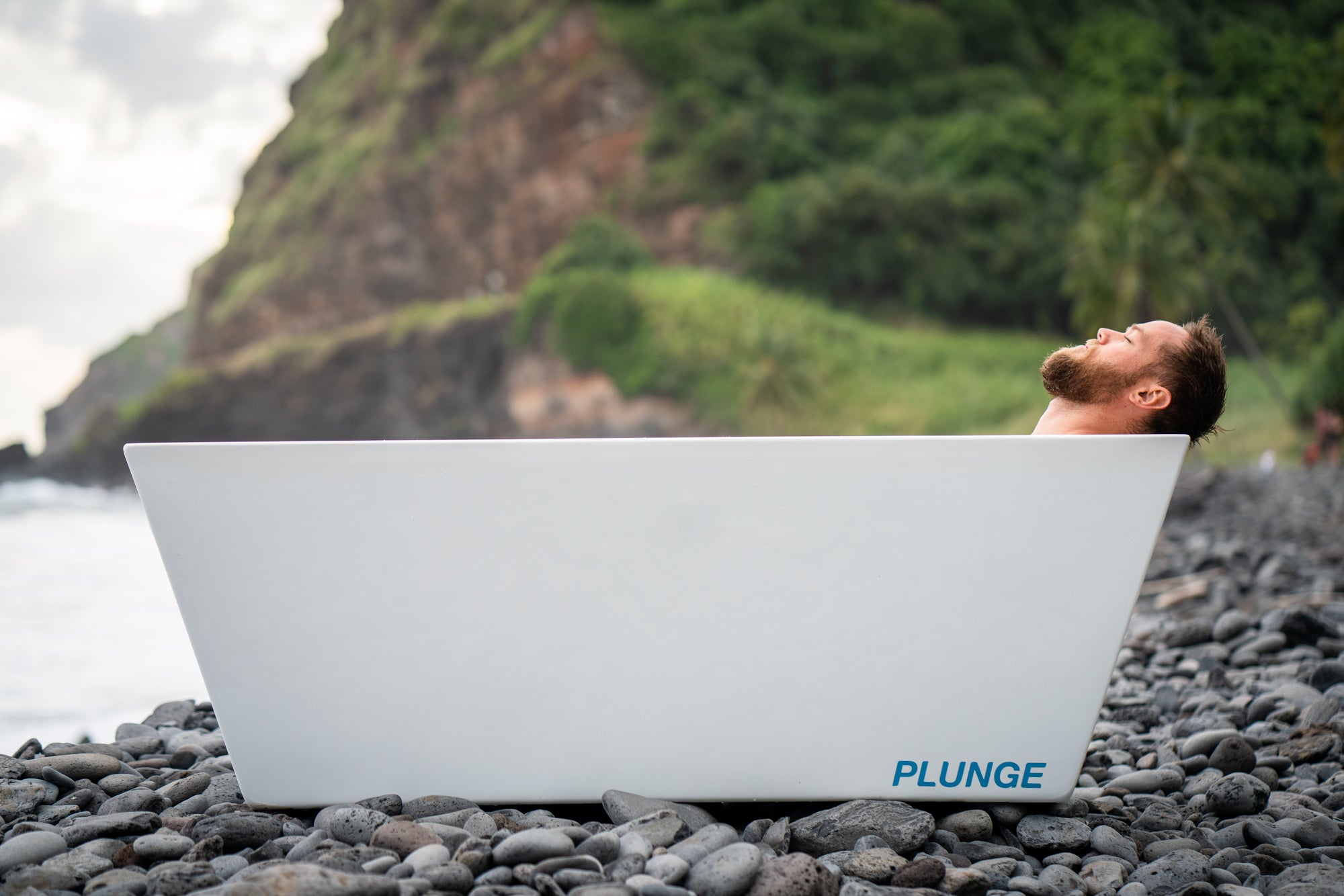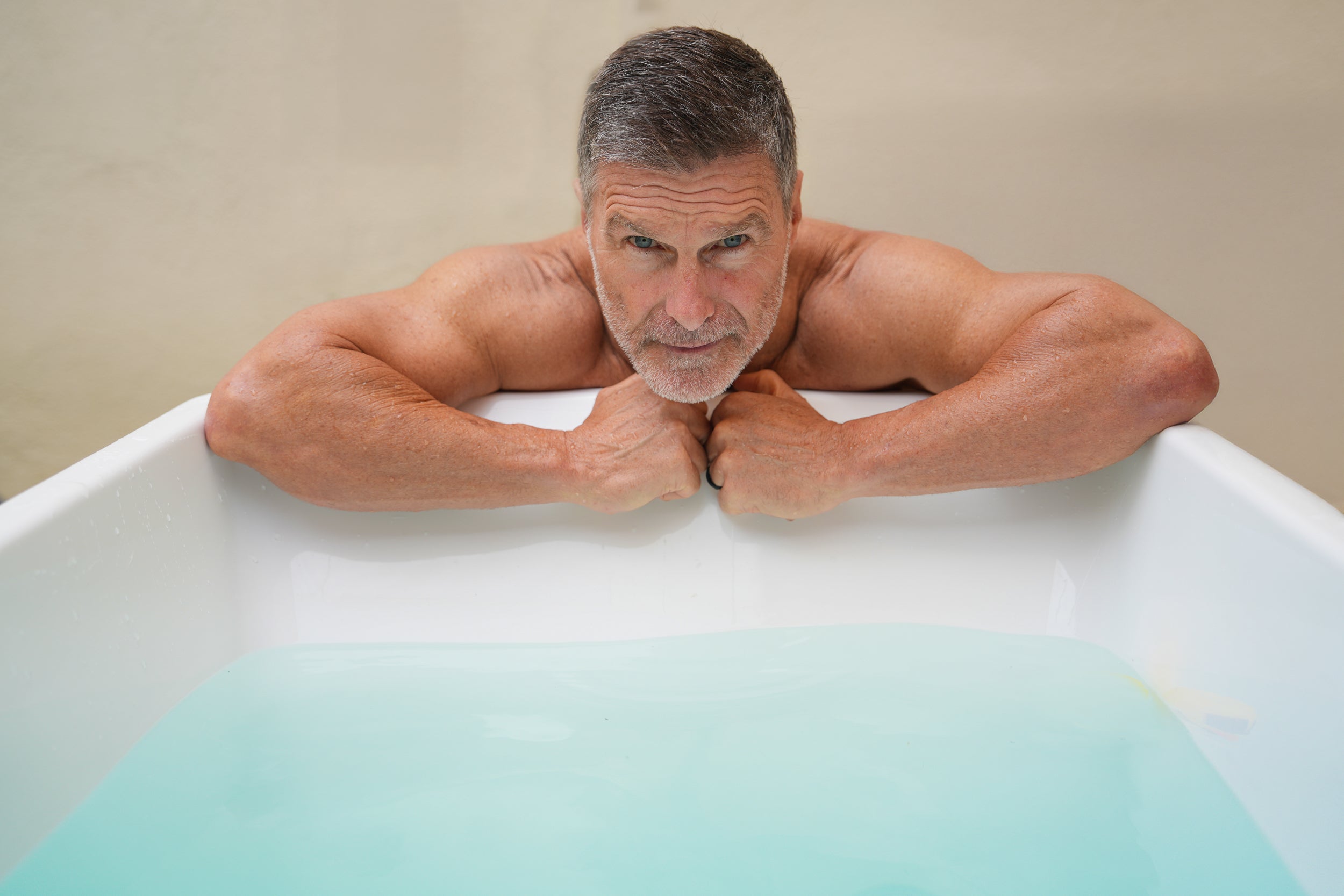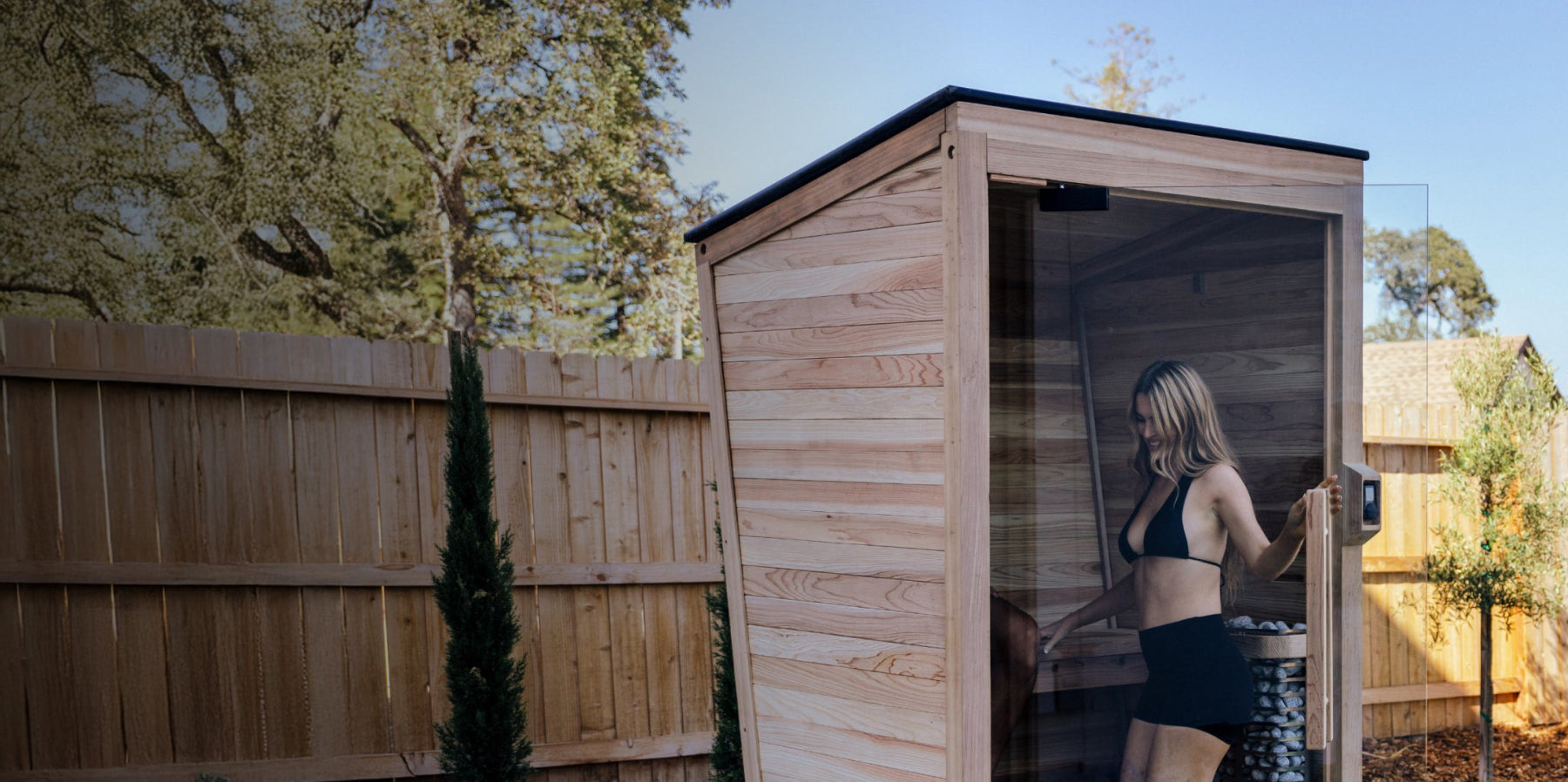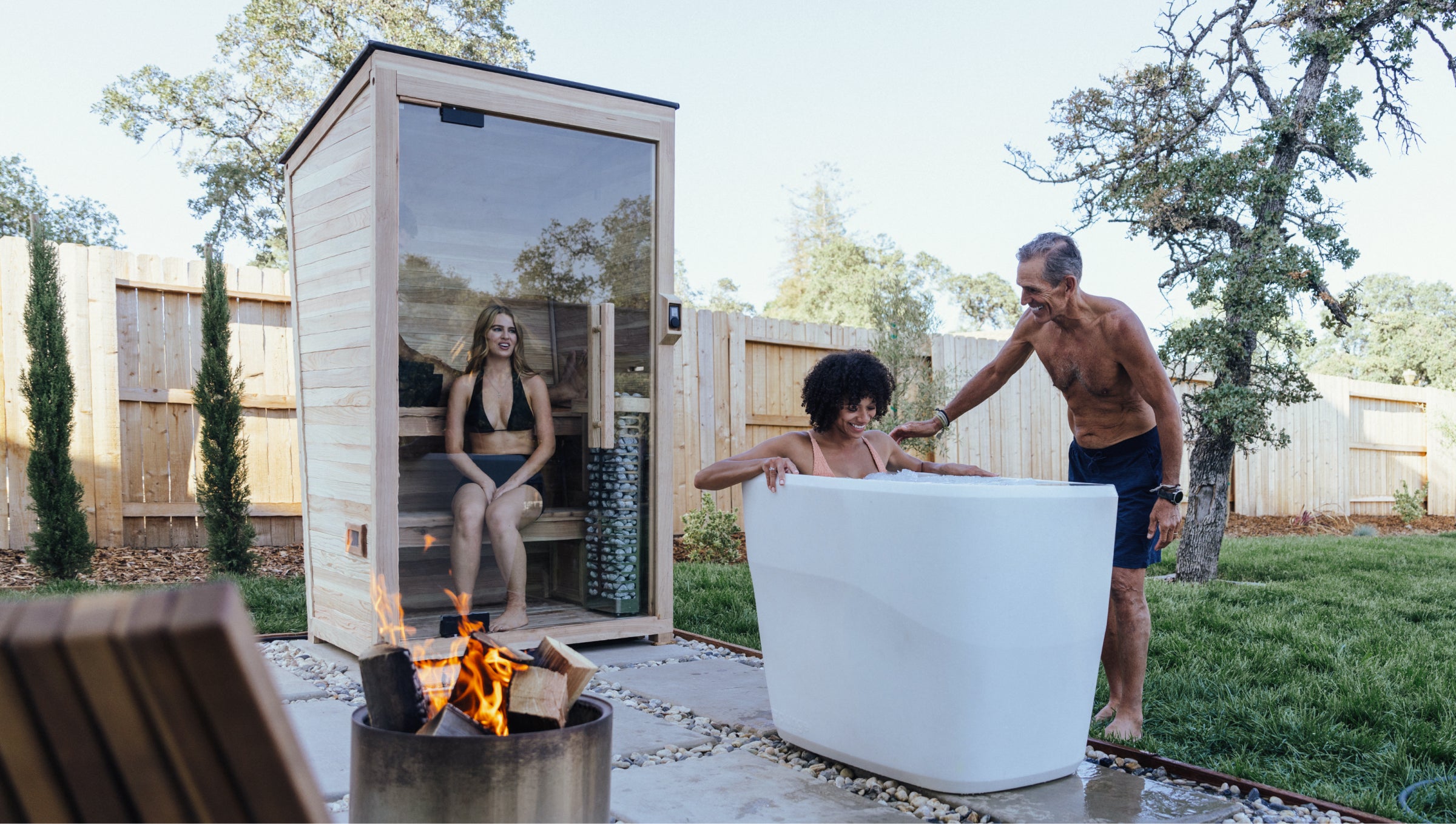
Why I Pursue Resilience Through Cold Plunging
The following is a guest post from leading health & wellness authority Seamus Mullen.
It has become very de rigueur in the world of social media to dig up quotes on the fortifying power of adversity, and for good reason. From Marcus Aurelius’ meditations “what stands in the way, becomes the way” to Friedrich Nietzsche’s “Out of life’s school of war - what doesn’t kill me makes me stronger” these nuggets of wisdom make complete sense to anyone who has ever triumphed through adversity and discovered newfound resilience.
Despite inherently knowing this, we humans have become masters in the pursuit of avoiding adversity at all costs.
We get hungry, we leverage technology to summons food-like substances without moving from our overstuffed, highly supportive furniture while getting a digital drip of entertainment. Our smart phones are rarely more than a few inches from us providing a continual barrage of dopamine hits. We are ceaseless in our pursuit of convenience and comfort.
I remember reading that during the energy crisis in the 1970’s President Carter tried to convince Americans to put on a sweater rather than turn up the heat, we all can imagine how successful the cable-knit campaign was! Once we have a taste for convenience, it’s really hard to change our behavior patterns. We all suffer from acute APS: Amazon Prime Syndrome. I think that it is probably programmed into our reptilian brain to seek out comfort and avoid adversity.
In the same way, I believe all humans have a sweet tooth. Sweet fruit is a brilliant example of the complex and beautiful symphony that is nature: a berry bramble entices an animal with her delicious fruit to encourage the distribution of her seeds (in a perfect, fertilized bundle) and continue the propagation of berry plants. Sweet berries let our ancestors know the fruit was not toxic and would provide quick, much needed energy and, in the rare event of a massive surplus of fruit, we could effectively store this energy as fat on our bodies for later use.
Hence if our hunter-gatherer ancestors living 20,000 years ago were lucky enough to come across a windfall of berries, they would likely gorge on them and then find some comfortable, safe shelter to, well, pursue comfort and do as little as possible. It’s unlikely that our ancestors would seek out temporary discomfort in an effort to develop resilience. Adversity was simply a fact of life.
Athletes have always known that pushing the body to the extreme - often in the form of moving heavy objects - followed by rest and recovery leads to increased strength and resilience. I find it fascinating to understand exactly why this is. And I’ve often wondered if this is limited only to physical strength or can we create targeted moments of adversity followed by recovery in other areas of our life to increase resilience?
Here’s the thing I’ve learned about humans (using my test group of N of 1, me being the human I have the most expertise in), we humans are really good at doing whatever we ask ourselves to do. What I mean is if I ask myself to watch TV and eat potato chips, I get pretty good at doing just that. Or, as a friend of mine once said when we were suffering our way up the Stelvio Pass in the Dolomites, one of the most notoriously difficult cycling climbs in the world, “you know, a groove is a lot like a rut!” The more comfort we enjoy, the more comfort we pursue. But I think it comes at a cost.
As a species, our general health has been on a significant decline over the course of the last century with a turbo-boost in obesity, type-2 diabetes and all other non-communicable diseases in the past 30 years. It would be naïve to point a finger at any one reason for this, I think the answer lies in a few macro-reasons and thousands of small micro-reasons. We can exercise some autonomy over the macro-reasons that impact our health like how we eat, how we move, etc., but it becomes very difficult to control all the micro-inputs that effect our health, the vast majority of which are far beyond our control.
I would like to think that if we can take the model of lifting weights to develop strength and resilience and apply that to other aspects of our life, we are likely to grow greater overall resilience and strength, ultimately making us less susceptible to all those things that are beyond our control. This is, in essence, the science of hormesis. Now please forgive my butchery of the science - I’m a chef, not a molecular biologist - but I’m fascinated by how the impact of all the small decisions we make throughout our day can have a massively positive aggregate effect on our wellbeing.
If we can agree that healthy, dense numbers of mitochondria are the key to cellular health and if we we’re made up of some 37 trillion cells, wouldn’t it stand to reason that healthy cells equal healthy body? What’s so very cool about the human body is that we can actually stimulate the growth of new mitochondria through lifestyle choices.
I call them choices because in the modern world of convenience, discomfort is something we have to actively seek out, unlike our ancestors for whom discomfort was a daily reality. This is, in chef’s speak, hormesis: expose the body to targeted stress, damaged mitochondria are reorganized in a process called autophagy into new, healthy mitochondria and, voila! we’re stronger/younger/sexier/smarter….
As it turns out there are a number of ways we can do this. One way is through exposure to low-level radiation something I’m not too keen to try, thank you very much. Fortunately there are much safer ways of exposing the body to targeted stress, the three ones that I have been practicing for over 12 years are: moving heavy objects (resistance training), caloric restriction (fasting for 16 hours a day with periodic longer fasts) and extreme temperature exposure.
There has been a lot of research recently on the health benefits of saunas and cold plunging, but all you have to do is look at the ancestral wisdom from cultures around the world and you’ll see that hot and cold baths have factored into both health-care as well as sick-care. I make this distinction because we have a tendency to be reactive when it comes to our wellbeing.
JFK had a great quote that is another one of my mantras: “The time to repair the roof is when the sun is shining.” I think of it as healthcare to reduce the need for sick-care. Hot and cold exposure have become a part of my regular routine in an effort to continually get stronger, age as slowly as possible and be less susceptible to illness.
I have gone through the gamut of chilling environments to create cold-exposure going all the way back to 2010. I used to take daily cold showers in the morning and in the evening I would use cold packs from my restaurant’s fish supplier and wrap them up against my chest with ace bandages for 45 minutes before bed, while watching Breaking Bad in my Walter Whities with the AC blasting in my tiny Manhattan apartment! When I moved to Brooklyn into a marginally larger apartment with a marginally acceptable bathtub, I graduated from the ice-pack system to lugging bags of ice from the corner bodega to make my bi-weekly bathtub plunge. In 2019 I moved to Los Angeles and built a DIY chest freezer plunge which worked remarkably well and was far more convenient than buying 50 pounds of ice every time I wanted to plunge. Admittedly it got pretty funky, pretty quickly.
I am very fortunate to now to have The Cold Plunge which has become a part of daily routine. I’ve experimented with different temperatures, different lengths of time, different times in the day, circulating versus non-circulating water, alternating hot-cold-hot, versus cold-hot-cold or cold, no heat. I’ve done deep dives into the world of nasal breathing and breathwork coupled with cold exposure and I’m 1000% sold.
I don’t think 20,000 years ago our ancestors would have thought “gee that arctic slush water looks really nice! I think Imma jump in there for 3-5 minutes up to my neck and splash my face to stimulate my mammalian dive reflex while doing box-breathing so I can burn some extra fat and get a nice big dopamine rush!” but no doubt crossing frigid waters in search of food or shelter was a common occurrence and the benefits they reaped helped them survive.
So I look at The Plunge as something that I don’t necessarily want to do in my pursuit of comfort, but rather I think of it as something I have to do in my pursuit of resilience. If I jump in that plunge first thing in the morning, I can pretty much be guaranteed that nothing I will face that day will be nearly as challenging as that chilly water.
Cold plunging is an incredibly effective tool in the toolbox of life that I believe pays dividends in mental health, immune health, endocrine function, metabolic health, cellular health and, well, it’s an impressive party trick to hang out in nearly freezing water for 5-10 minutes and be completely calm!
Sometimes you just gotta get a little comfortable with being uncomfortable and you’ll see that the obstacle is in fact the path.
- Seamus Mullen
Award-winning chef, restaurateur and cookbook author known for inventive yet approachable Spanish cuisine. Also a leading authority on health and wellness.




